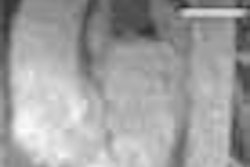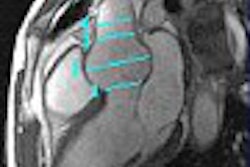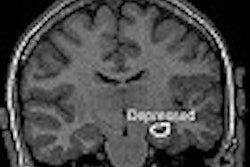VIENNA - Chinese researchers have developed a method to quantitatively measure concentrations of brain metabolites using a position resolved spectroscopy sequence (PRESS) in MRI, according to a presentation Saturday at the European Congress of Radiology.
A noninvasive approach to metabolite evaluation could facilitate research on better pharmaceuticals for treatment of bipolar disease and other mood disorders, according to the presenter, Dr. R.H. Wu of the Second Hospital at Shantou University in Guangdong, China.
"If we know that the brain metabolism is lower, maybe we can know the molecular basis (for treating the disease)," Wu said.
While MR has been used to ascertain metabolite ratios, those ratios are considered insufficient by others, including the editors of peer-reviewed publications, Wu said. Therefore, he began looking for a means to noninvasively determine the absolute concentrations of metabolites.
Wu studied 19 healthy volunteers (nine female, 10 male) using a 3-tesla scanner. Magnetic resonance spectroscopy data were acquired from three square voxels measuring 2 cm3 each: one placed in the cortex of the left frontal lobe, one in the cortex of the left temporal lobe and one in the external standard. The CSF volume fraction in the spectroscopic voxels was corrected.
The PRESS sequence was used to acquire data, with TE1=25 msec, TE2 =25 msec, TR=3000 msec, and 128 scan averages. Marquardt functions were used to fit the resonance peaks of n-acetylaspartate (NAA), total creatine, choline-containing compounds, and myo-inositol. Their respective peak areas were measured using the Peak Research (PERCH) program.
The metabolite concentrations determined by his method were consistent with quantitative concentrations reported in the literature, Wu said.
In addition to showing that brain metabolites could be quantified by noninvasive means, Wu found no significant differences between the frontal lobe and temporal lobe concentrations among his volunteers.
By Tracie L. ThompsonAuntMinnie.com staff writer
March 6, 2004
Related Reading
Ongoing brain injury detected in HIV patients on therapy, February 12, 2004
MR spectroscopy tracks chemical shift in brain tumors for better diagnosis, management, May 4, 2003
MR spectroscopy images HIV-related brain changes, November 29, 2004
Copyright © 2004 AuntMinnie.com



















